Movement Therapy Dorset
Relieve Pain, Enhance Performance
Specialised Sports Massage, Pilates & Movement Therapy
How Can We Help You?
Pilates classes wimborne
pilates classes corfe mullen
pilates classes broadstone
pilates classes wareham
pilates classes poole
pilates classes ferndown
pilates classes parkstone
pilates classes ashley cross
pilates classes for back pain
pilates classes for beginners
sports massage poole
sports massage broadstone
sports massage wimborne
sports massage corfe mullen
sports massage wareham
sports massage back pain
sports massage bournemouth
deep tissue massage
osteopath wimborne
osteopath poole
osteopath dorset
physio poole
physio broadstone
physio wimborne
physio bournemouth
physio for dancers dorset
Need help? Feel free to get in touch
Contact Info
Address
New Studio *Coming soon
Email Us
alex@movementtherapydorset.com
Call Us
07536103364
